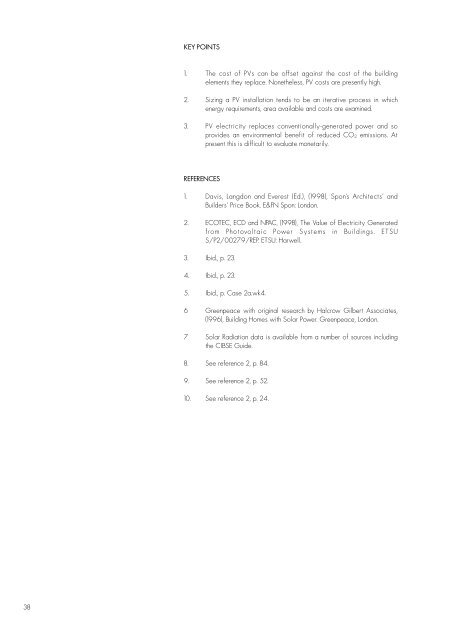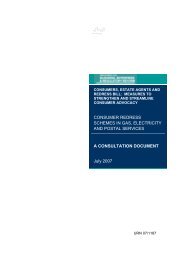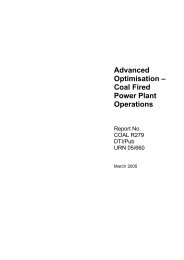Photovoltaics in Buildings A Design Guide - DTI Home Page
Photovoltaics in Buildings A Design Guide - DTI Home Page
Photovoltaics in Buildings A Design Guide - DTI Home Page
Create successful ePaper yourself
Turn your PDF publications into a flip-book with our unique Google optimized e-Paper software.
38<br />
KEY POINTS<br />
1. The cost of PVs can be offset aga<strong>in</strong>st the cost of the build<strong>in</strong>g<br />
elements they replace. Nonetheless, PV costs are presently high.<br />
2. Siz<strong>in</strong>g a PV <strong>in</strong>stallation tends to be an iterative process <strong>in</strong> which<br />
energy requirements, area available and costs are exam<strong>in</strong>ed.<br />
3. PV electricity replaces conventionally-generated power and so<br />
provides an environmental benefit of reduced CO2 emissions. At<br />
present this is difficult to evaluate monetarily.<br />
REFERENCES<br />
1. Davis, Langdon and Everest (Ed.), (1998), Spon’s Architects’ and<br />
Builders’ Price Book. E&FN Spon: London.<br />
2. ECOTEC, ECD and NPAC, (1998), The Value of Electricity Generated<br />
from Photovoltaic Power Systems <strong>in</strong> Build<strong>in</strong>gs. ETSU<br />
S/P2/00279/REP. ETSU: Harwell.<br />
3. Ibid., p. 23.<br />
4. Ibid., p. 23.<br />
5. Ibid., p. Case 2a.wk4.<br />
6 Greenpeace with orig<strong>in</strong>al research by Halcrow Gilbert Associates,<br />
(1996), Build<strong>in</strong>g <strong>Home</strong>s with Solar Power. Greenpeace, London.<br />
7 Solar Radiation data is available from a number of sources <strong>in</strong>clud<strong>in</strong>g<br />
the CIBSE <strong>Guide</strong>.<br />
8. See reference 2, p. 84.<br />
9. See reference 2, p. 52.<br />
10. See reference 2, p. 24.
















